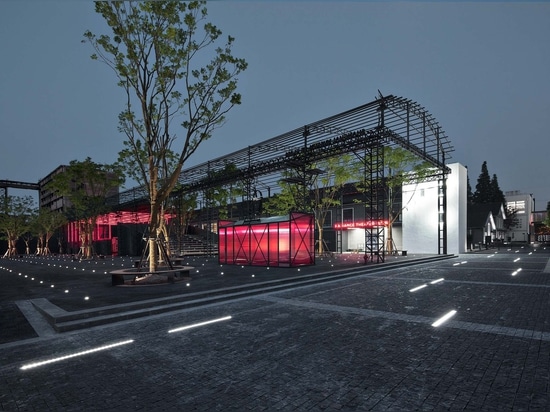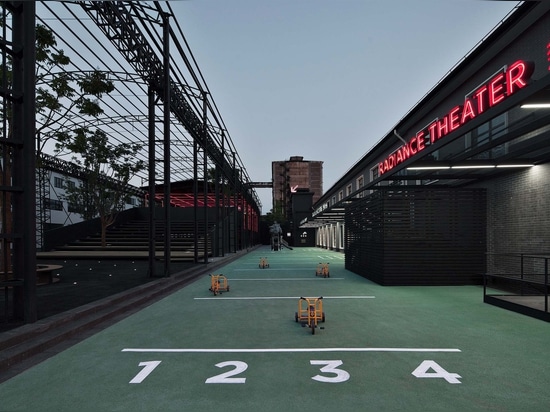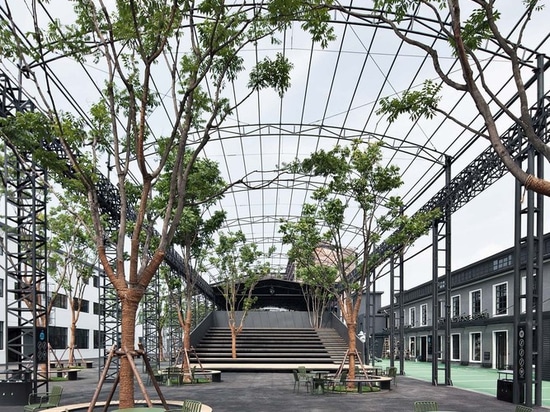
#PUBLIC ARCHITECTURE PROJECTS
Shanghai Museum of Glass Park / Coordination Asia
It has evolved from a 3,500 sqm museum when it first opens in 2011 to a 17,800 sqm multi-functional museum park where visitors can spend the entire day. With the vision to build a constantly growing and living museum, a variety of display methods, both interactive and artistic have been incorporated over past years to engage not only the senses but also the minds of the visitors.
For the past decade, Tilman Thürmer, founder of Coordination Asia, has worked closely with Zhang Lin, President of Shanghai Museum of Glass, to create a constantly evolving influential cultural institute. Involved from the beginning, Tilman has helped to keep breathing new life into the museum park which now has grown to a major attraction in Shanghai, covering 17,800 sqm with 20 thematic exhibition halls and facilities. Instead of eradicating all traces of the past, the park translated existing structures and elements into an impactful design language, fusing with the memories of the place to forge a compelling narrative of the endless possibilities of glass.
Every inch of Shanghai Museum of Glass is carefully curated to unfold a multi-layered story of glass as well as its relationship with people and with the memories of the place. Sometimes informative and other times philosophical, the exhibitions constitute a symphony of artistic presentation and interactive displays.
Through the kaleidoscopic glassy tunnel at the entrance, a set of 5 screens greets visitors with slow-motion footages of the movement of people that resonates the movements of objects, capturing the underlying connections between the two. An impressive commissioned artwork consisting of 10 large stained glass windows depicts 10 faces of individuals of three different generations. Made of 900 glass shards of multiple colors and textures, this piece of artwork visualizes the strong bond between generations, also is a subtle hint of the legacy preserved in this space. Sitting at the very spot of the glass-making kiln in the former factory is an interactive media installation “Fusion”, which translates viewers’ movements into dynamic visualization of material and element, letting visitors experience three major sensations during the formation of glass. This installation is a collaboration between the museum and media artist Tobias Gremmler whose body of work explores movement in computer art. In the center of the main hall, eight animated lines of LED showing the history of glass manufacturing in Shanghai shoot out from the ground as if they are the residual heat of the kiln radiating from the past.
Instead of a static space that displays objects, Shanghai Museum of Glass is a growing platform that houses not only knowledge, inspirations but also all the events that take place here. An illuminated elevated house of glass on the 2nd floor of the main hall shelters a piece of unusual artwork – a pair of broken glass wings. Originally titled “Angel is Waiting”, this piece had been created by the artist Shelly Xue to mark the birth of her daughter. Unfortunately, on September 7, 2013 part of this beautiful work of art was deliberately damaged by a visitor and cannot be repaired. Despite the frustration and heartache, the artist and the museum decided to display the piece in the damaged form, hoping that it will serve as a warning and a reminder that everyone partaking in a cultural visit should respect and care for the artists’ works. The artist renamed this piece of work “Broken”, giving a new layer of meaning and deeper significance – any damage will eventually enrich the narrative as a whole.
Through collaborations with renowned national and international artists, Shanghai Museum of Glass has created a platform for art and the material glass. The artwork displayed at the entrance of main hall, titled “Warm Currents”, is a large circular structure consisting of glass beakers and vials slowly rotates in two directions with pink florescent fluid running inside. This impressive artwork is a collaboration between the museum and renowned artist Lin Tianmiao and it has become part of the museum’s permanent collection.
Adding a series of outdoor spaces and artist studios to the nexus of the museum park in 2019, Shanghai Museum of Glass creates opportunity for a vast range of activities, bringing the art of glass closer to the public. Located at the former warehouse of glass-making materials, the skeleton of the building is kept and integrated into a black steel dome structure, stretching over an open event platform and an outdoor theater. Clusters of trees and a web of lights on the ground shape a vibrant environment that welcomes visitors to stick around. Forum is a 260 sqm open platform that contains seats on a cascade of wooden stairs where visitors can enjoy drinks under the shades during various live events, such as music performances and lectures.
Adjacent to the back of Forum, a matrix of glowing red LED lines captures attention from distance, highlighting a visually impactful 436 sqm Outdoor Theater that accommodates up to 340 people for hot glass show or various live performances.The radiating light installation surrounding the elevated seats fully expresses the heat, passion and excitement on the stage.
Next to a new entrance to Kids Museum of Glass, an open runway gives young visitors a playground to spend time with their families and it also serves as a space for a diversity of activities designed for kids.
Started out with determination to be a cultural destination of global significance, Shanghai Museum of Glass has remained true to its original aspiration and the achievements are recognized by international awards and growing popularity both at home and abroad. As design director and consultant, Tilman Thürmer has helped President Zhang Lin at every step for last decade, to break rules, to realize daring concepts and make sure that Shanghai Museum of Glass keeps setting new standards for museums in China.







